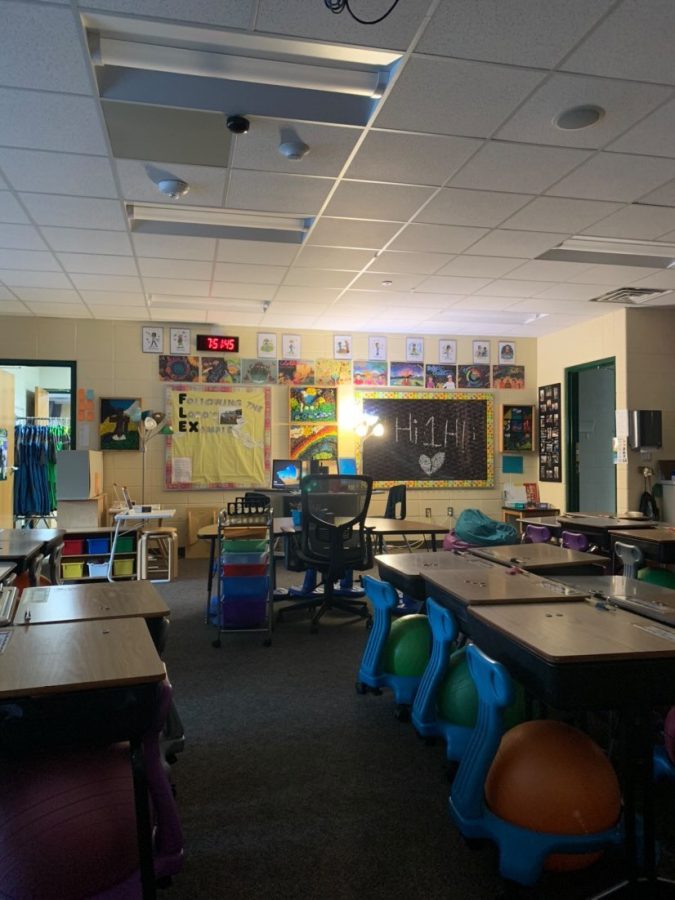Senior Ella Peterman has noticed a significant difference in her students before and after the pandemic.
The pandemic changed education. Now education students are learning to adapt
September 26, 2022
When senior special education major Ella Peterman student-aided with kindergarteners before the pandemic, her students were emergent readers and fairly fluent in social interactions.
Now, as a student teacher, she works with first graders who are further behind in reading and social skills than those kindergarteners were.
The COVID-19 pandemic has caused major changes in P-12 education, including learning difficulties in the classroom, increased use of technology and a worsening teacher shortage. Calvin student teachers and the education department have had to adapt to this new reality, finding both new challenges and opportunities.
Challenges and opportunities
Recent research corroborates what Peterman has seen as a student teacher. Extended periods of isolation and remote learning correlate with lower standardized test scores, a trend seen especially in high-poverty schools, according to data from the Brookings Institute and Center for Education Policy Research.
This year, the Michigan Department of Education reported that students have still not returned to pre-pandemic learning levels.
The Calvin education department has responded to these conditions by providing a widened support system for student teachers, according to education professor and teacher internship coordinator Jane Genzink. This has included connecting students with online and in-person training related to trauma and forming a new group for first year teachers that will meet monthly.
While the pandemic has hit P-12 students hard, it has also given rise to some helpful practices. Genzink said that it’s more common now for teachers to give virtual support to students who are absent or behind and to conduct parent-teacher conferences online. She said this makes communication with schools more consistent and accessible for families in some communities.
Peterman said that while she’s had less in-person teaching experience than student teachers before the pandemic, she’s also more comfortable with technology. Her own remote-learning experience in college has taught her what makes online instruction effective, she told Chimes.
High demand for teachers
In addition to altered classroom settings, education students are also entering a beleaguered teacher workforce.
The education department has heard from partners in the P-12 field that increased stress and added responsibilities, like giving COVID-19 tests and problem-solving among families with diverse beliefs about masking, has contributed to the teacher shortage, according to Genzink.
On the one hand, this has made it challenging to find experienced teachers to mentor education students. On the other hand, it has made Calvin students well positioned as they enter the job market. Demand for excellent teachers is high, and several students have stepped into vacancies immediately after completing their program, Genzink said.
Fifth-year English secondary education student Jacob Harvey said education students are nervous about the challenging post-remote learning landscape, but are excited to get to work. “There’s not an ed student who isn’t ready to dive into it,” he said.
